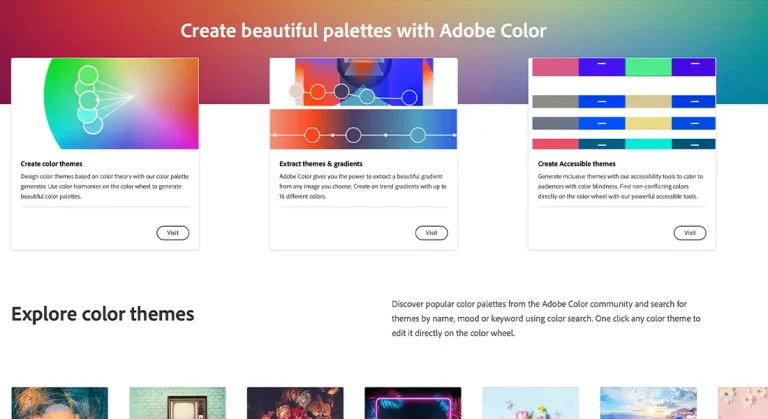
Social media algorithms are beneficial for the average social media user. For marketers, however, it is more complicated, and it appears that many marketers haven’t fully understood social media algorithms and how they work, which represents a constant struggle for them.
Thankfully, they are as mysterious as they may appear and can be understood. This article will explain how popular social media platforms; Instagram, Facebook, and YouTube work. So, marketers and influencers know how to use these algorithms to their advantage.
Understanding Social Media Algorithm
The simplest definition of a social media algorithm refers to how the posts in a social media user’s feed are sorted based on their relevance rather than when they are published.
Social media platforms prioritize a user’s feed based on the content that they are likely to want to see. Before the introduction of algorithms, social feeds were primarily displayed in reverse chronological order. So, the newest or latest posts are given more priority. However, more emphasis is put on relevance now.
Social media algorithms determine the content that is relevant to you based on your actions on the platform. So, for instance, the accounts of your family and friends that you engage with most on Facebook are going to be all over your feed because their posts are relevant to you.
You must have seen some recommended videos on YouTube, too, right? These recommendations are based on your behavior on YouTube. The algorithm digs into some of the past videos and the channels you frequently watch to recommend content to you. read more articles
How Instagram Algorithm Works
Instagram stopped using reverse-chronological feed since 2016 and has used ranking signals by the algorithm to determine the posts on the user’s feed. Some of the signals that the Instagram algorithm used to determine the order of content on your feed are:
- The likelihood that you will like the content or be interested in it.
- The date the content was shared.
- Past interactions with the poster.
These signals affect marketers profoundly in their bid to find the proper engagement techniques, the right influencers, and measure the program’s performance.
Key signals for Instagram algorithm
- Relevance
This is the most important signal for an Instagram algorithm, not the content’s reach. The reason is that users will only take up an interest in an influencer’s content if it is relevant to them. So, for instance, if a user is interested in football, they will likely be interested in content from football-related accounts or influencers.
So, marketers need to ditch the trend of looking out for mega-influencers and celebrities with a rich reach and focusing on micro, macro, or nano influencers creating content that is more relevant to their target audience.
- Recency
The recency of the post is an essential second signal. So, influencers that post regularly have an edge here. But, unfortunately, marketers only seek out influencers to make a post during their campaign rather than build a long-term relationship with influencers that will become brand advocates and create a series of posts for the brand consistently.
- Resonance
This signal deals with the engagement of a post. Does it prompt people to interact with likes, comments, views, and shares?
Not all posts that influencers make mentioning a brand increases brand awareness. This is something that marketers need to learn. You need metrics like brand awareness, brand familiarity, brand frequency, brand emotions, brand favorability, brand preference, purchase consideration, and brand demand to measure the impact of an influencer campaign, not bogus ones like the Earned Media Value (EMV).
How Facebook Algorithm Work
The most recent significant change to Facebook’s algorithm was in 2018 when Mark Zuckerberg announced that they are changing the algorithm’s goal from finding relevant content to helping users have meaningful social interactions. This change means that public content such as posts from brands, businesses, and media are given less importance compared to posts from families and friends.
This algorithm change is why many influencers don’t see Facebook as a platform to make money. Still, it is surprising that many marketers continue to send out posts and videos on Facebook, even when they’re getting very few interactions.
How YouTube Algorithm Work
The YouTube algorithm works differently from the first two. This is because the search and discovery systems on YouTube have two goals: for viewers to find the content they want and ensure viewers’ long-term engagement and satisfaction.
For YouTube influencers, they need to start to create content on discoverable topics. YouTube is one of the world’s biggest and most-used search engines. People come to this platform to search for all kinds of videos on all sorts of subjects. While they may not be specific about an influencer’s video, if the video ranks well in suggested videos or search results, they will find it. So, it is a good idea for influencers to inform their YouTube content strategies based on searches by the audience. But, of course, the algorithm cannot watch your video. That’s why you must optimize your metadata, like descriptions, tags, and titles.
Unfortunately, marketers do not adopt the right approach to YouTube. Instead, they ought to search for topics and search terms that are relevant to their brand on YouTube and identify the influencers that create high-ranking content for these search terms, topics, and keyword phrases to work with.
Influencers can also help themselves by creating lengthy watch-time sessions for all their video content. To do this, they have to organize and feature the content on their YouTube channel and use series playlists. This will make them more discoverable by marketers who could go through their playlist and evaluate whether they are suitable for their campaign or not.
Conclusion
This article demystifies social media algorithms for marketers and influencers that have struggled to understand them. In addition, it will ensure that both groups understand the way social media algorithms work and help them to use the algorithm to their advantage to achieve their social media goal.
if you’re looking to increase your online conversion but still feel you are not sure where to start – check out these resources below:








5 thoughts on “How Algorithms Of Social Networks, Facebook, Instagram, And YouTube Work”
I never realized how much of a difference lighting can make in product photography until I read this post. Thanks for sharing these tips
Another deep dive into the algorithms of social media platforms. This information is invaluable for anyone looking to grow their online presence!
Understanding the algorithms of social networks is key in today’s digital age. This article breaks it down perfectly. Very helpful!
Again, a fascinating read on social media algorithms. It’s essential understanding for anyone in digital marketing or content creation!
This article opened my eyes to how social networks like Facebook, Instagram, and YouTube use algorithms. Really insightful and well explained!